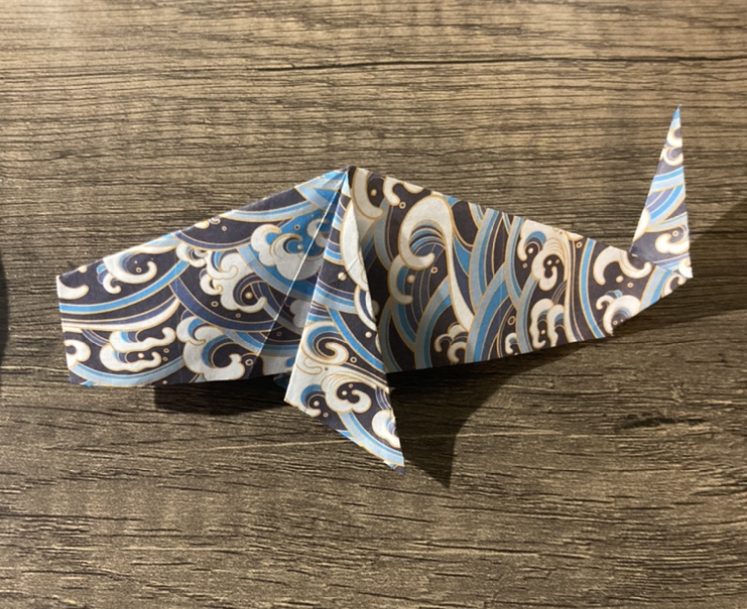For our assignment, we participated in a guided origami instruction over Zoom. The catch was we couldn’t see what the person we were instructing was making. The person who was being guided couldn’t see any references or images about what they were making, relying purely on verbal communication to carry out their next fold.
Rebecca: As a visual learner, the process of learning through audio was a strange one. As Anishwar instructed me to fold my paper, I scrambled to visualize the shapes he was seeing. Certain comments were helpful — comments like “create a diamond with shorter sides at the top and longer sides at the bottom.” He guided me by providing clues about what I was looking at: a trapezoid on the left, a triangle with the point facing the right. We’d check in after each step and clarify what we were both looking at, what orientation the shapes took and what the back of our paper looked like and where the prominent folds were positioned. I think these constant checkpoints allowed for what I’d consider a successful instructional session, and eventually I saw my paper take the form of a whale.


Anishwar: My experience of being instructed was interesting because it was hard to make sure that I was on the same page as Rebecca. There was a lot of confusion about the orientation of the origami in progress and where and how to make the folds. There were many moments when we paused the folding and instructional processes to either backtrack or clarify an instruction. Predictably, these moments of confusion were nonexistent at the beginning and became much more frequent the further we progressed. We found it often helped to compare the overall form of the folding in progress to a familiar object or icon (often the Washington Monument) and for me to reiterate the steps I took back to Rebecca as a way of identifying any mistakes. I think that this exercise was kind of illuminating as to the limitations of some forms of telepresence. Often to overcome the rules of this exercise, we ended up using our hands to gesture or indicate directions. Overall, I thought this was an interesting exercise, and although I didn’t end up with the same result as when Rebecca made the origami originally, it was interesting to see that even with our self-imposed limitations I ended up with something close.

Leave a Reply
You must be logged in to post a comment.